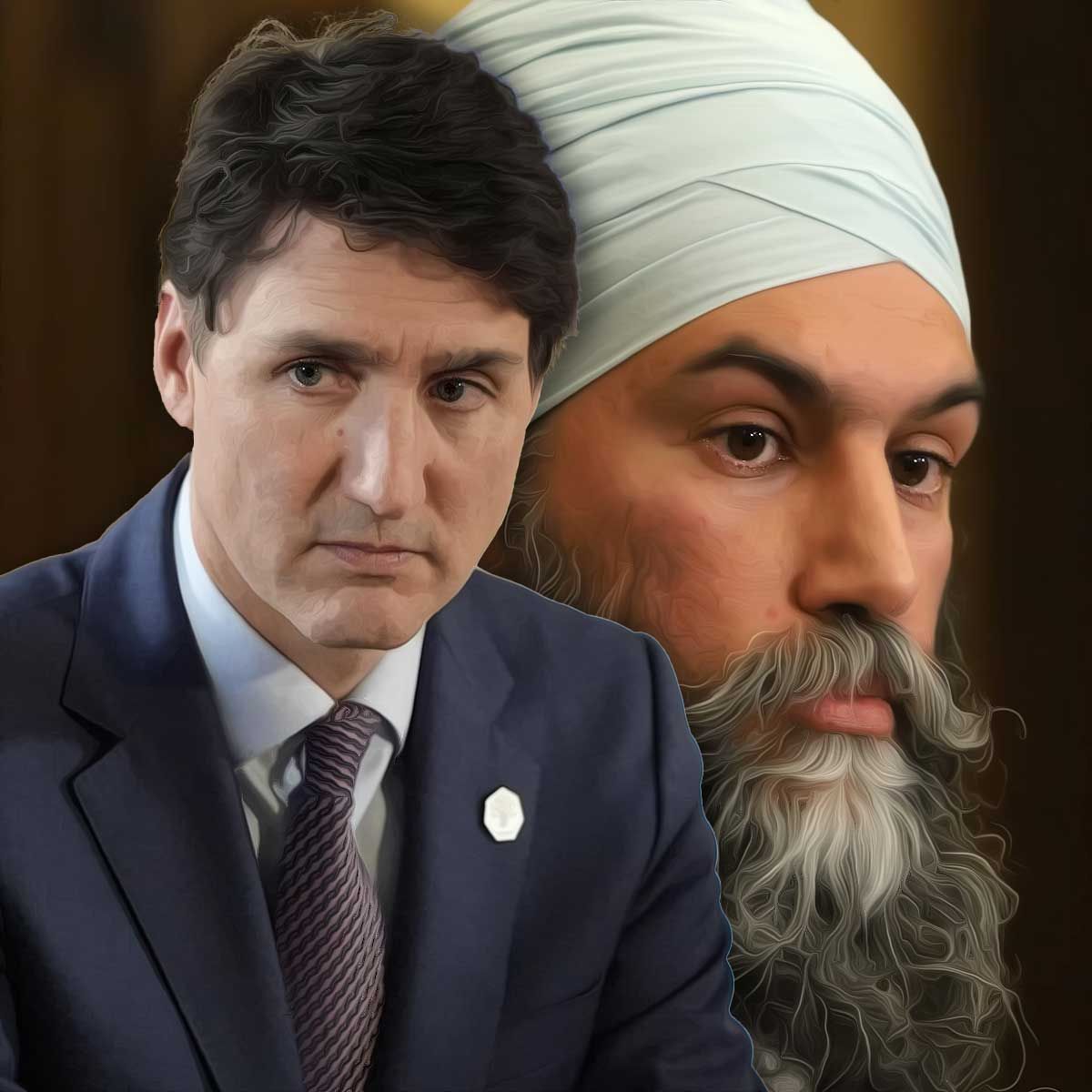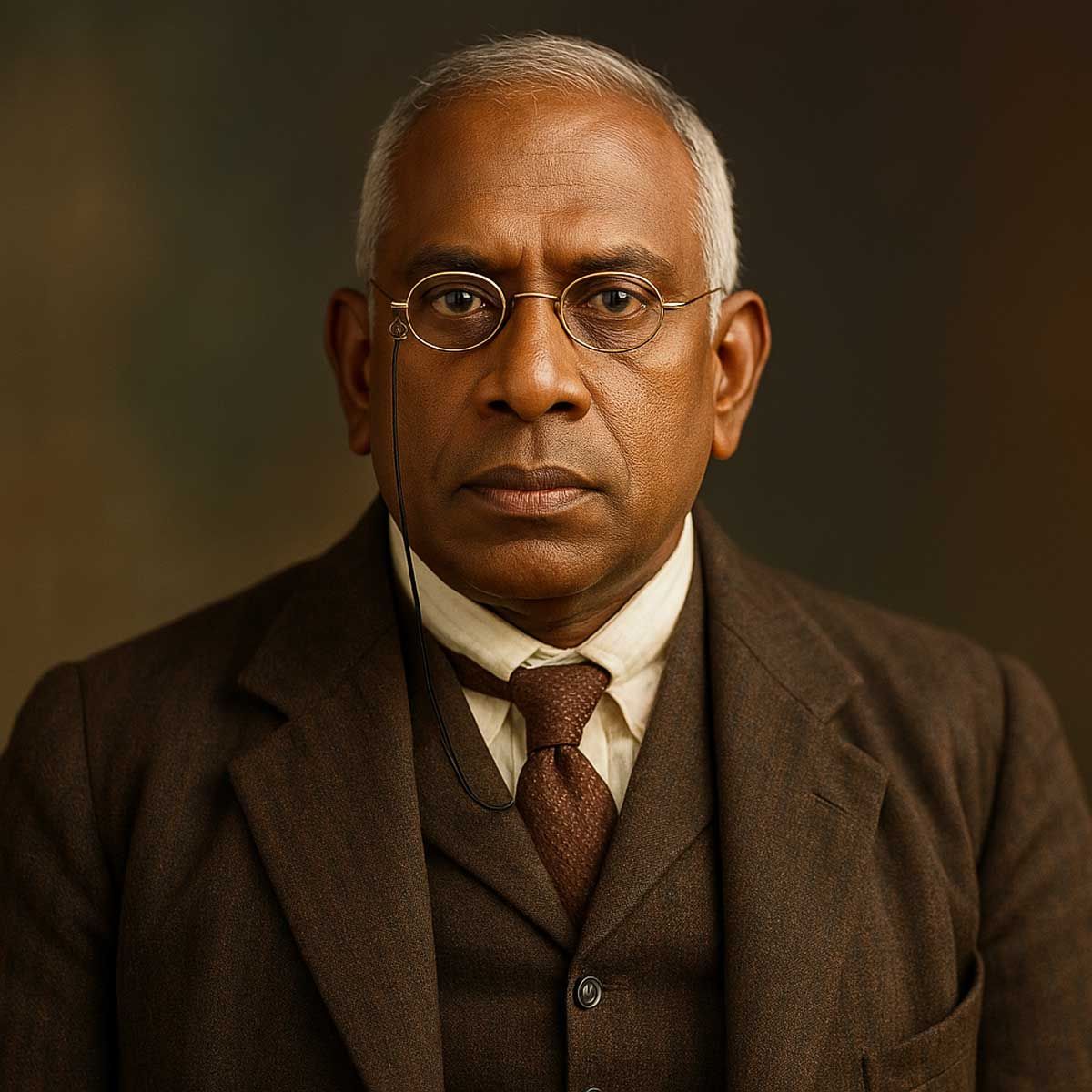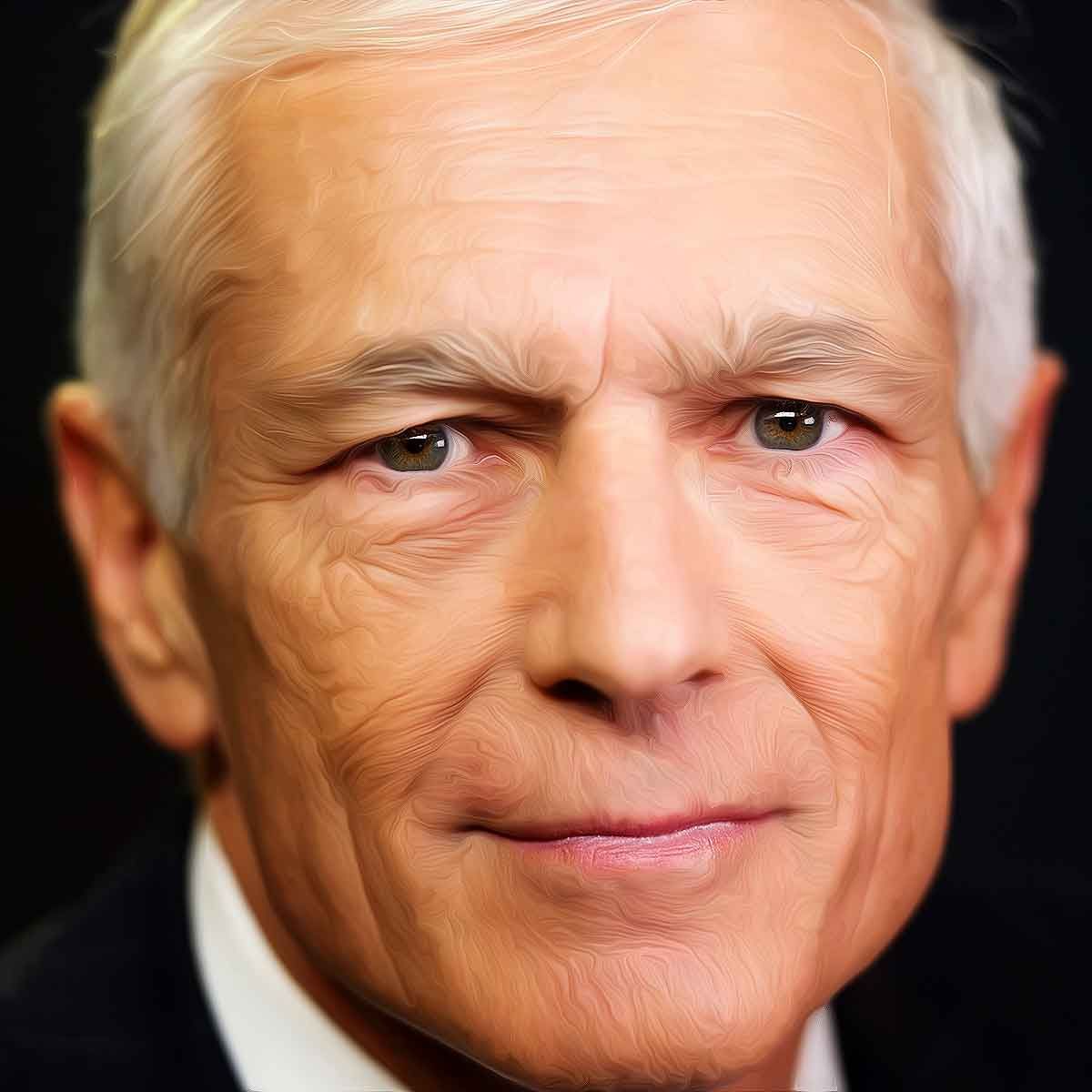MORE COVERAGE
Twitter Coverage
Satyaagrah
Written on
Satyaagrah
Written on
Satyaagrah
Written on
Satyaagrah
Written on
Satyaagrah
Written on
JOIN SATYAAGRAH SOCIAL MEDIA
India hits back, revealing a Canadian Border officer's role in aiding Khalistani terrorists and ISI in the murder of Sikh activist Balwinder Singh Sandhu, as Trudeau accuses Indian diplomats of killing terrorist Hardeep Singh Nijjar, escalating tensions

Canadian Prime Minister Justin Trudeau’s accusations against Indian diplomats, claiming their involvement in the killing of Khalistani terrorist Hardeep Singh Nijjar, have escalated tensions between the two nations. Nijjar, an illegal immigrant who was controversially granted Canadian citizenship, was killed last year. These allegations have once again shed light on Canada's alleged sheltering of Khalistani terrorists, raising serious concerns about the government's intentions and its handling of such sensitive issues.
|
Recently, the Royal Canadian Mounted Police (RCMP) came forward with claims that the notorious Lawrence Bishnoi gang, which operates in Canada, is linked to agents of the Indian government. However, India's Ministry of External Affairs (MEA) was quick to respond, pointing out that Canada had failed to act on India's previous requests to deport members of the Bishnoi gang. These individuals have reportedly been involved in criminal activities within Canada, yet they continue to operate with impunity, frustrating India’s efforts to combat terrorism.
The Ministry of External Affairs has been vocal about its concerns regarding Canada’s inaction against anti-India elements within its borders. According to the ministry, the Canadian government has repeatedly ignored India's calls to address the activities of individuals and groups promoting violence and separatism. Despite Prime Minister Trudeau’s public assertion of his commitment to the “One India” policy, India's MEA contends that there is a stark discrepancy between Trudeau’s words and his government's actions.
MEA spokesperson Randhir Jaiswal underscored this point, stating, “We have seen those comments from Prime Minister Trudeau asserting his belief in the 'One India' policy. However, so far, the actions we have requested against anti-India elements — who undermine One India, call for dismemberment of the nation, and espouse separatist ideologies — have not been taken." This stark observation illustrates the growing frustration on the Indian side over Canada’s failure to crack down on these elements.
For over two decades, India has submitted 26 pending extradition requests to Canada, many of which involve individuals associated with the Lawrence Bishnoi gang. Yet, these requests have gone unanswered, further straining diplomatic ties between the two countries. India’s persistent calls for action highlight the urgency of addressing the threat posed by these criminals and separatists, a threat that Canada appears unwilling to confront.
While Trudeau continues to champion the "One India" policy in his speeches, the growing gap between his statements and actions is becoming harder to ignore.
In an unexpected twist, an officer from Canada’s border police, the Canadian Border Service Agency (CBSA), has been linked to terrorist activities. This revelation comes as part of a growing list of fugitive terrorists whom India is seeking to have deported from Canada.
According to a Times Now report, Sandeep Singh Sidhu, a member of the banned International Sikh Youth Federation (ISYF), is not just another figure in the Khalistan movement, but is actually employed with the CBSA. This alarming connection ties Sidhu to the promotion of terrorism in Punjab. Furthermore, Sidhu has been in contact with Pakistan-based Khalistan terrorist Lakhbir Singh Rode and operatives from Pakistan's ISI to orchestrate the assassination of Balwinder Singh Sandhu in October 2020, right outside his residence in Bhikhiwind, a village located in the Tarn Taran district of Punjab.
Balwinder Singh Sandhu, a notable figure during the 1980s Khalistan militancy, was a beacon of resistance against the Khalistani terrorists. He courageously defended his community during Punjab's darkest days and became an icon of the state's resistance to separatist violence. His relentless fight against terrorism earned him the Shaurya Chakra, one of India’s top gallantry awards. Sandhu was not just a symbol of bravery but also an inspiration for countless others, as he continually repelled attacks by heavily armed militants. His success in doing so served as a rallying cry for others across Punjab, showing them that they too could stand against terror and protect their land.
Despite enduring multiple assassination attempts over the years, Sandhu’s resilience became legendary. His village, Bhikhiwind, turned into a symbol of resistance, where locals refused to bow down to Khalistani extremists. Tragically, however, the fight took a dark turn in October 2020 when Sandhu was finally ambushed and killed in his own village.
On that fateful day, two assailants arrived in Bhikhiwind on a motorcycle, lying in wait for Sandhu outside the school he had established. The moment he arrived and began to open the gate, the attackers struck, firing five bullets into him before speeding away from the scene. Though the villagers rushed to Sandhu’s aid, taking him to the hospital, their efforts were in vain. Sandhu was declared dead on arrival, marking the tragic end of a man who had become a symbol of courage in the face of terror.
One significant aspect of Balwinder Singh Bhikhiwind's life was his fierce opposition to the Khalistan referendums that were being organized by the Sikhs For Justice (SFJ) in both the United States and Canada. His vocal stance against these separatist movements made him a target for pro-Khalistan extremists. Despite the threats and his dangerous stance, Singh continued to stand firmly against the radicalization that the Khalistani movement sought to impose on the Sikh youth.
According to Times Now, an official report from India revealed an unsettling detail: Sandeep Singh Sidhu, despite his involvement with criminal activities and being a member of the International Sikh Youth Federation (ISYF), had recently been promoted to the rank of superintendent within the Canadian Border Service Agency (CBSA). This promotion, in the light of his alleged terrorist connections, has only deepened India's concerns over Canada's handling of individuals tied to extremist activities.
|
In another major development, the National Investigation Agency (NIA) submitted critical information to the Supreme Court of India, shedding light on the masterminds behind Balwinder Singh's assassination. The NIA's investigation found that key figures of the Khalistan Liberation Force (KLF), based in the United States and Canada, were the brains behind the murder. Specifically, the Canada-based Khalistani operative Sunny Toronto and the Pakistan-sheltered terrorist Lakhbir Singh, also known as Rode, were named as the primary accused. Lakhbir Singh Rode, notably, is the nephew of the infamous Khalistani figurehead Jarnail Singh Bhindranwale. Both of these individuals have been listed as absconders in the NIA's chargesheet.
An important aspect to note is that the Economic Times has not yet confirmed whether Sunny Toronto is an alias for the CBSA official Sandeep Singh Sidhu or if these are two separate individuals. This ambiguity has added another layer of complexity to the ongoing investigation, leaving open questions regarding the true identity and role of those involved.
Balwinder Singh’s legacy, however, extends beyond his tragic death. His bravery caught the attention of the international media, and he was even featured in a National Geographic documentary. His contributions to the fight against terrorism were formally recognized when he was awarded the Shaurya Chakra, a prestigious Indian military decoration. The Shaurya Chakra is given for acts of valor, courageous action, or self-sacrifice, often awarded to civilians who demonstrate exceptional bravery in life-threatening situations.
An unyielding Communist, Balwinder Singh Bhikhiwind stood firmly against the religious radicalization of Sikh youth and the dangerous influence of the Khalistani movement. During Punjab’s violent period of militancy, Singh transformed his home village into a fortified stronghold, protecting not just his family but the broader community from terrorist attacks. He personally trained his family, including his wife and children, in the use of arms, preparing them to defend themselves against armed militants. This preparation proved crucial, as Singh faced numerous attacks over the years, yet each time he managed to repel the heavily armed terrorists.
His unwavering courage led the Ministry of Defence to award him the Shaurya Chakra, an honor that is rarely bestowed upon civilians. This recognition highlighted his extraordinary contribution to maintaining peace and resisting terrorism during one of Punjab’s most turbulent times.
The official Shaurya Chakra citation awarded to Balwinder Singh Sandhu provides a chilling insight into the sheer scale of the threats he faced and the courage he displayed. The citation reads: “Balwinder Singh Sandhu and his brother Ranjit Singh Sandhu are opposed to the activities of terrorists. They were in the hit list of terrorists. The terrorists have so far made 16 attempts to wipe out the Sandhu’s family within a span of about 11 months." This alone paints a picture of the relentless danger that the Sandhu family lived under, with terrorists repeatedly trying to silence their opposition to Khalistani militancy.
These attacks were no small-scale skirmishes. The terrorists would come in large, organized groups, numbering anywhere between 10 to 200, targeting the Sandhu family with lethal force. The citation details, “The terrorists attacked them in groups of 10 to 200, but every time Sandhu brothers with the help of their brave wives Smt. Jagdish Kaur Sandhu and Balraj Kaur Sandhu have successfully failed the attempts of militants to kill them." This statement highlights not only the bravery of Balwinder Singh and his brother but also the incredible resilience and courage of their wives, who stood alongside them during these life-threatening situations.
The first attack occurred on 31st January 1990, and the last one took place almost two years later on 28th December 1991. The most intense and deadly assault, however, happened on 30th September 1990, when a group of around 200 terrorists launched a well-coordinated and heavily armed attack on the Sandhu household. The terrorists came prepared, blocking the approach road to the house with underground gun mines, ensuring that no police forces could come to their aid. The attack lasted a grueling five hours, with the terrorists using deadly weapons, including rocket launchers. Despite the overwhelming odds, Balwinder Singh, his brother, and their wives fought back using pistols and sten-guns provided by the Government, forcing the terrorists to retreat. As the citation states, “The resistance shown by Sandhu brothers and their family members forced the terrorists to retreat. All these persons have displayed courage and bravery of a high order in facing the attack of the terrorists and failing their repeated murderous attempts.”
Balwinder Singh's courage earned him immense respect and recognition, but his life was always at risk. For years, he was under police protection due to the threats posed by Khalistani groups, which remained active and dangerous. However, in a controversial move, his security detail was withdrawn in 2019 following a recommendation by the Tarn Taran police, leaving him vulnerable to future attacks.
The admiration for Balwinder Singh extended beyond his immediate community. Retired IAS officer KBS Sidhu took to Twitter to express his respect, stating, “He was a very brave man. As Deputy Commissioner Amritsar from 1992 to 1994, I had seen that he was the sole person in village Bhikhiwind who had taken arms, quite literally, against terrorists. He was very courageous and fearless.”
In the aftermath of Balwinder Singh Sandhu's tragic death, his widow, Jagdish Kaur Sandhu, spoke to The Times of India (TOI) and made it clear that the attack was politically and ideologically motivated. “It is a terrorist attack," she confirmed, dismissing any notion of personal enmity or conflict with others. The family had been specifically targeted by terrorists due to Balwinder Singh’s outspoken opposition to Referendum 2020, a Khalistani initiative that has been held in various cities across the United States and Canada over the past few years. These referendums aim to gather support for the creation of an independent Khalistan, a cause that Balwinder Singh actively opposed.
Balwinder Singh's bravery in the face of terror started much earlier, with the first attempt on his life occurring on January 31, 1990. From that moment onward, his life was one of constant battle, as he faced repeated attempts by Khalistani terrorists to silence him. Jagdish Kaur noted with pride how her husband had bravely battled them throughout the years, never backing down despite the grave threats. The scale of these attacks was staggering. She shared, “There are 42 registered cases of attack on my husband and many are unreported,” emphasizing that the documented threats were just the tip of the iceberg, with many other incidents likely left unrecorded.
Adding to the tragedy, Jagdish Kaur expressed her frustration and sorrow over the actions of the police. Over the years, despite the clear and present danger, the police had withdrawn Balwinder Singh’s security multiple times, leaving him exposed to further attacks. She directly blamed the police for these decisions, which left her husband vulnerable to the final assault that ended his life. The inconsistency in providing security, especially to someone who had been attacked so many times, is a point of deep anguish for the Sandhu family, as it may have contributed to Balwinder Singh’s untimely death.
|
When Sandhu family repelled attack by 200 Khalistani terrorists
The Shaurya Chakra citation paints a vivid picture of the extraordinary bravery displayed by the Sandhu family, who were firmly opposed to terrorism and became frequent targets of Khalistani terrorists. According to the citation, the Sandhus had become fixtures on the terrorists’ hit list, with extremists making repeated efforts to eliminate them. By April 14, 1993, the terrorists had launched 16 separate attacks on the family over a span of just 11 months, but each time, the family courageously foiled the attempts to kill them.
The most terrifying of these attacks occurred on September 30, 1990, when an armed group of 200 Khalistani terrorists launched a large-scale, well-coordinated assault on the Sandhu family's residence. Surrounded on all sides, the Sandhus were attacked with an arsenal of deadly weapons, including rocket launchers. The terrorists had meticulously planned the attack, even blocking the approach road to the house to ensure that no help from the police could reach the family. The isolation and intensity of the attack were meant to overwhelm the Sandhus, but they refused to be intimidated.
In the face of this violent onslaught, Balwinder Singh Sandhu, his brother, and their wives fought back with everything they had. Armed with pistols and stun guns provided by the government, the family held their ground and mounted a determined defense against the heavily armed terrorists. Despite being vastly outnumbered and outgunned, the Sandhus' courage and resilience forced the terrorists to retreat after a grueling five-hour battle. The resistance shown by the Sandhu brothers and their family was nothing short of heroic, as they managed to repel the militants, preventing what could have been a devastating loss of life.
This story of defiance against insurmountable odds stands as a powerful testament to the courage of the Sandhu family, whose bravery in the face of relentless terrorism earned them the Shaurya Chakra, one of India’s highest civilian honors. Their ability to fight off 200 armed terrorists speaks to the strength of their resolve and the deep belief they held in protecting their community and standing firm against the forces of terrorism.
 Support Us
Support Us
Satyagraha was born from the heart of our land, with an undying aim to unveil the true essence of Bharat. It seeks to illuminate the hidden tales of our valiant freedom fighters and the rich chronicles that haven't yet sung their complete melody in the mainstream.
While platforms like NDTV and 'The Wire' effortlessly garner funds under the banner of safeguarding democracy, we at Satyagraha walk a different path. Our strength and resonance come from you. In this journey to weave a stronger Bharat, every little contribution amplifies our voice. Let's come together, contribute as you can, and champion the true spirit of our nation.
 |  |  |
| ICICI Bank of Satyaagrah | Razorpay Bank of Satyaagrah | PayPal Bank of Satyaagrah - For International Payments |
If all above doesn't work, then try the LINK below:
Please share the article on other platforms
DISCLAIMER: The author is solely responsible for the views expressed in this article. The author carries the responsibility for citing and/or licensing of images utilized within the text. The website also frequently uses non-commercial images for representational purposes only in line with the article. We are not responsible for the authenticity of such images. If some images have a copyright issue, we request the person/entity to contact us at This email address is being protected from spambots. You need JavaScript enabled to view it. and we will take the necessary actions to resolve the issue.
Related Articles
- "Turbulence tests the strength of community bonds": Hindu temple in Canada faces vandalism by Khalistan supporters, spotlighting escalating tensions after Khalistani activist Hardeep Singh Nijjar's death, What's next for the Hindu community abroad
- "Life deals you a lot lessons, some people learn from it, some people don't": Notorious Khalistani terrorist & radical separatist Hardeep Singh Nijjar shot dead within the premises of the Guru Nanak Sikh Gurdwara Sahib in Surrey, British Columbia, Canada
- Sukhdool Singh, a notorious gangster listed by NIA assassinated in Canada, highlighting the growing web of Punjab's criminals overseas, as India's concerns rise, the spotlight turns to Canada's stance on sheltering such elements from Punjab's underworld
- "From Father to Son: A Troubling Legacy": In a sinister echo of the past, Canadian PM Trudeau openly endorses Khalistani elements against India, uncovering the dark history of Pierre Trudeau shielding notorious Kanishka bombing mastermind Talwinder Parmar
- "Nations stand tall when they stand firm": Amid soaring India-Canada tensions, India strikes a decisive blow against Khalistanis, seizing assets of Sikhs For Justice chief Gurpatwant Singh Pannun & Hardeep Singh Nijjar, reshaping geopolitical landscape
- Amid rising tensions, Sikhs and Hindus held an anti-Justin Trudeau protest at the Canadian Embassy in Delhi over attacks on Hindu temples by Khalistanis, Trudeau acknowledged Khalistani presence as India-Canada relations worsen after Nijjar's killing
- "Face the future, say 'bring it on'": NIA lists 43 top criminals, including Canada-based with Khalistani ties, as tensions rise, Trudeau implicates India in Nijjar's Canada murder; India promptly refutes, calling the accusation 'absurd and motivated'
- "अस्सी खालिस्तानी गुंडे": Khalistani goons attacked Hindu devotees at Brampton's Hindu Sabha Temple on Nov 3, 2024; Peel Police sided with the attackers, targeting Hindus in their own temple, Leaders Trudeau & Poilievre failed to name the Khalistanis
- Amidst Trudeau's allegations against India, Sri Lanka condemns Canada's double standards, highlighting Ottawa's controversial recognition of a Nazi veteran and its past accusations of 'Tamil Genocide', Canada's international image is under severe scrutiny
- The untold exodus of 1.5 lakh Punjabi Hindus to Delhi’s Piragarhi camp; forced upon by Sikh radical Khalistani terrorists led by Bhindranwale
- Justin Trudeau, who admitted past marijuana use, denies 'credible rumors' from ex-Indian diplomat Deepak Vohra of his plane carrying cocaine in India, Trudeau missed G20 dinner and stayed secluded for two days, possibly high on drugs
- "Home of the free, especially for the 'wanted'": From harboring Khalistanis like Nijjar to shielding the assassin of Sheikh Mujib, Nur Chowdhury, Canada's actions reveals its double standards and raise critical questions about the nation's true values
- NIA team of 3 members reaches Canada to investigate terrorist org SFJ, other pro-Khalistani groups and their foreign funding links
- "Unity, not division, is the foundation for progress and peace": Escalating Tensions in Canada: Indian diaspora holding the Tricolour, counters Khalistani separatists outside the consulate to protect their diplomats amidst Trudeau's political predicament
- Sikhs for Justice accused Russia of aiding India’s RA&W in killing Khalistani terrorist Nijjar; Russia denied claims, called SFJ’s $25K reward for tracking diplomats unacceptable, sought law enforcement action, and protection under Vienna Convention laws

























